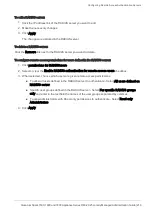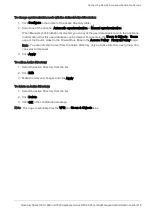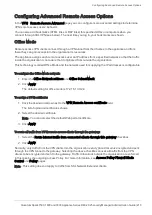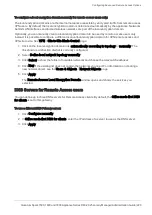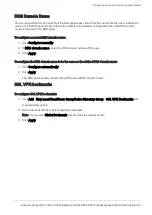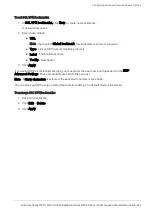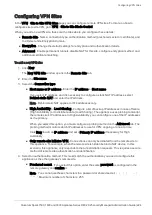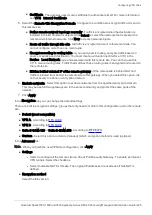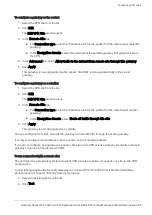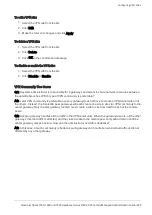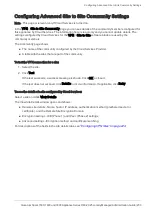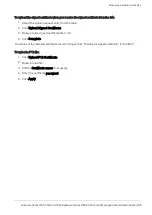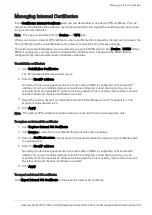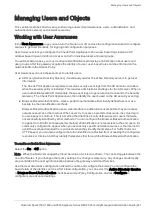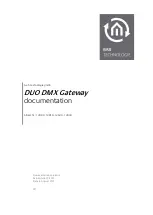
Configuring VPN Sites
Quantum Spark 1500, 1600 and 1800 Appliance Series R80.20.25 Locally Managed Administration Guide | 226
IKE
Version
Notes
IKEv1
l
The modes for IKE negotiation are Main Mode and Aggressive Mode.
For IKE negotiation, the Main Mode uses six packets, and the Aggressive
Mode uses three packets.
We recommend you use the Main Mode, which is more secure.
By default,
Enable aggressive mode
is
not
selected and the Main Mode is
used.
Enable the Aggressive Mode only if necessary, and the other side of the VPN
tunnel does not support the Main Mode. (Third party gateways primarily do
not work in the Main Mode.)
The Aggressive Mode is used to create a tunnel and one of the gateways is
behind NAT. In this case, a pre-shared secret does not provide enough data
for authentication in the Main Mode. Authentication must be done using a
certificate and a gateway (peer) ID, or a secondary identifier couple that is
available in the Aggressive Mode. The secondary identifier method is also
available in IKEv2.
l
If you select
Enable aggressive mode for IKEv1
:
o
Use Diffie-Hellman group
- Determines the strength of the shared
DH key used in IKE phase 1 to exchange keys for IKE phase 2. A
group with more bits ensures a stronger key but lower performance.
o
Initiate VPN tunnel using this gateway's identifier
- When this
gateway's IP address is dynamic and the authentication method is the
certificate and the peer ID, you must enter the
Gateway ID
. For
Type
,
select domain name or user name.
IKEv2
When you create a tunnel and one of the gateways is behind NAT without a
certificate (uses a pre-shared secret), with IKEv2 protocol you can use a secondary
identifier couple to allow authentication.
In this case, the pre-shared secret is not enough.
If you select
Create IKEv2 VPN tunnel using these identifiers
, configure these
settings:
l
Peer ID
- Enter the identifier.
l
Gateway ID
- Select
Use global identifier
or
Override global identifier
(enter the new identifier).





